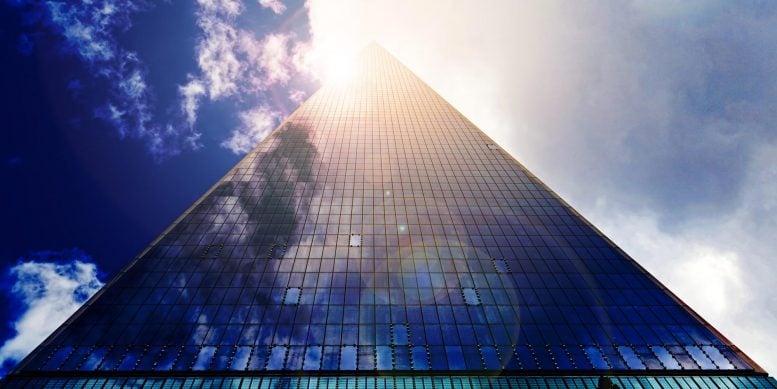
University of Michigan researchers have achieved a new efficiency record for color-neutral, transparent solar cells, bringing us a step closer to skyscrapers that can generate power.
In a step closer to skyscrapers that serve as power sources, a team led by University of Michigan researchers has set a new efficiency record for color-neutral, transparent solar cells.
The team achieved 8.1% efficiency and 43.3% transparency with an organic, or carbon-based, design rather than conventional silicon. While the cells have a slight green tint, they are much more like the gray of sunglasses and automobile windows.
“Windows, which are on the face of every building, are an ideal location for organic solar cells because they offer something silicon can’t, which is a combination of very high efficiency and very high visible transparency,” said Stephen Forrest, the Peter A. Franken Distinguished University Professor of Engineering and Paul G. Goebel Professor of Engineering, who led the research.
Buildings with glass facades typically have a coating on them that reflects and absorbs some of the light, both in the visible and infrared parts of the spectrum, to reduce the brightness and heating inside the building. Rather than throwing that energy away, transparent solar panels could use it to take a bite out of the building’s electricity needs. The transparency of some existing windows is similar to the transparency of the solar cells Forrest’s group reports in the journal Proceedings of the National Academy of Sciences.
“The new material we developed, and the structure of the device we built, had to balance multiple trade-offs to provide good sunlight absorption, high voltage, high current, low resistance and color-neutral transparency all at the same time,” said Yongxi Li, an assistant research scientist in electrical engineering and computer science.
The new material is a combination of organic molecules engineered to be transparent in the visible and absorbing in the near infrared, an invisible part of the spectrum that accounts for much of the energy in sunlight. In addition, the researchers developed optical coatings to boost both power generated from infrared light and transparency in the visible range–two qualities that are usually in competition with one another.
The color-neutral version of the device was made with an indium tin oxide electrode. A silver electrode improved the efficiency to 10.8%, with 45.8% transparency. However, that version’s slightly greenish tint may not be acceptable in some window applications.
Transparent solar cells are measured by their light utilization efficiency, which describes how much energy from the light hitting the window is available either as electricity or as transmitted light on the interior side. Previous transparent solar cells have light utilization efficiencies of roughly 2-3%, but the indium tin oxide cell is rated at 3.5% and the silver version has a light utilization efficiency of 5%.
Both versions can be manufactured at large scale, using materials that are less toxic than other transparent solar cells. The transparent organic solar cells can also be customized for local latitudes, taking advantage of the fact that they are most efficient when the sun’s rays are hitting them at a perpendicular angle. They can be placed in between the panes of double-glazed windows.
Forrest and his team are working on several improvements to the technology, with the next goal being to reach a light utilization efficiency of 7% and extending the cell lifetime to about 10 years. They are also investigating the economics of installing transparent solar cell windows into new and existing buildings.
Reference: “Color-neutral, semitransparent organic photovoltaics for power window applications” by Yongxi Li, Xia Guo, Zhengxing Peng, Boning Qu, Hongping Yan, Harald Ade, Maojie Zhang and Stephen R. Forrest, 17 August 2020, Proceedings of the National Academy of Sciences.
DOI: 10.1073/pnas.2007799117
The team includes researchers at North Carolina State University, Soochow University in China, and SLAC National Accelerator Laboratory.
This material is based upon work supported by the U.S. Department of Energy Solar Energy Technologies Office as well as the Office of Naval Research and Universal Display Corporation.
Forrest is also a professor of electrical engineering and computer science, material science and engineering, and physics.

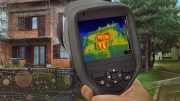
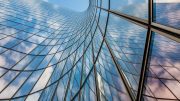

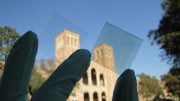
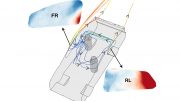
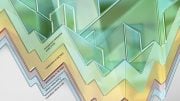
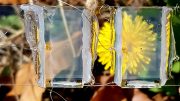
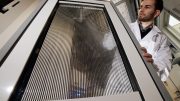
First. This is a joke. The 8% efficiency of this window pane only occur when the angle of the window to the sun is PERFECTLY 90 DEGREES.
Second 2/3 of the building never sees the sun.
Third. skyscrapers tend to be placed near other skyscrapers. As a result, much of the skyscraper that is facing the sun is in the shade.
This article is a waste of electrons.
And, the light available for conversion to electricity drops off rapidly between 30 and 0 degrees. Because the windows can’t track the sun, windows will never be as efficient as sophisticated solar farms. It remains to be seen whether the electricity produced by a peak 10% efficiency will pay for the initial installation, and replacement every decade.
First, this is not a joke. People want this stuff. Yes the 8% efficiency of this window pane occurs when the angle of the window to the sun is PERFECTLY 90 DEGREES, BUT IT DROPS OFF PROPORTIONALLY. So you get about 7.9% efficiency at 89 degrees. Placing the building away from other skyscrapers and having the windows face the sun is required. Replacing some roofing square footage with these panels could let in enough light to eliminate incandescent lights and provide power as well.
Adverse
On what do you base your claim that the efficiency drops off proportionately? It appears that you have little acquaintance with optics. I suggest that you read and digest the material here about Fresnel’s Equation:
https://en.wikipedia.org/wiki/Fresnel_equations
The reflectance and transmission of light changes approximately linearly (“proportionally”)for the first 40 to 60 degrees, depending on the refractive index of the glass, and then it becomes distinctly non-linear with the transmission rapidly approaching zero at a glancing angle.
Yes, we can just move all the tall buildings in downtown Manhattan and all the other large cities!
Interesting.
Here is a thought which can be explored.
Just like a Prism can split visible white light into its component Colours VIBGYOR in all its colourful glory, can we look for materails which will split the sun spectrum photons from a broad range to a narrow range with high energy photons and then increase the efficiency of the Solar panels by having a cooling mechanism in place, as high temperatures decrease the efficiency of solar photovoltaic cells. Maybe, this can lead to breakthrough increase in efficiency of Solar Power.
This would convert such energy conversion Science, into a engineering problem. This coupled with breakthroughs in Power Storage technologies Batries) for when the Sun is not Shining , can lead to an inexaustible source of energy for humanity. No shortage of brillliant engineers globally.
A joke.. the windows produce electricity for 10 years.. what are they going to do, re-skin the building every 10 years.. the power would not be worth it..
@Brian – It may not be good enough yet, but it is worth doing research to try and improve it. Meanwhile, solar awnings are a thing. They extend outwards from the building above each row of windows, and keep too much heat from reaching the inside. With new high efficiency double-sided panels and placing them only on the side facing the Sun, they might provide a worthwhile addition.
And of course, if a tall building is among other tall buildings, some or all of the building face may be shaded too much to use solar (or for that matter tinted windows). Architects and engineers look at building shading as a basic part of design.
Lovely idea to selectively absorb UV and/or NIR portion of sunlight to have higher transparency. However, I believe that the indoor situation is the most important drawback of this type of solar cells. power storage devices required.
Anyway, putting all of these ideas and different type of solar cells and power storage devices can pave the way to fight against global warming.